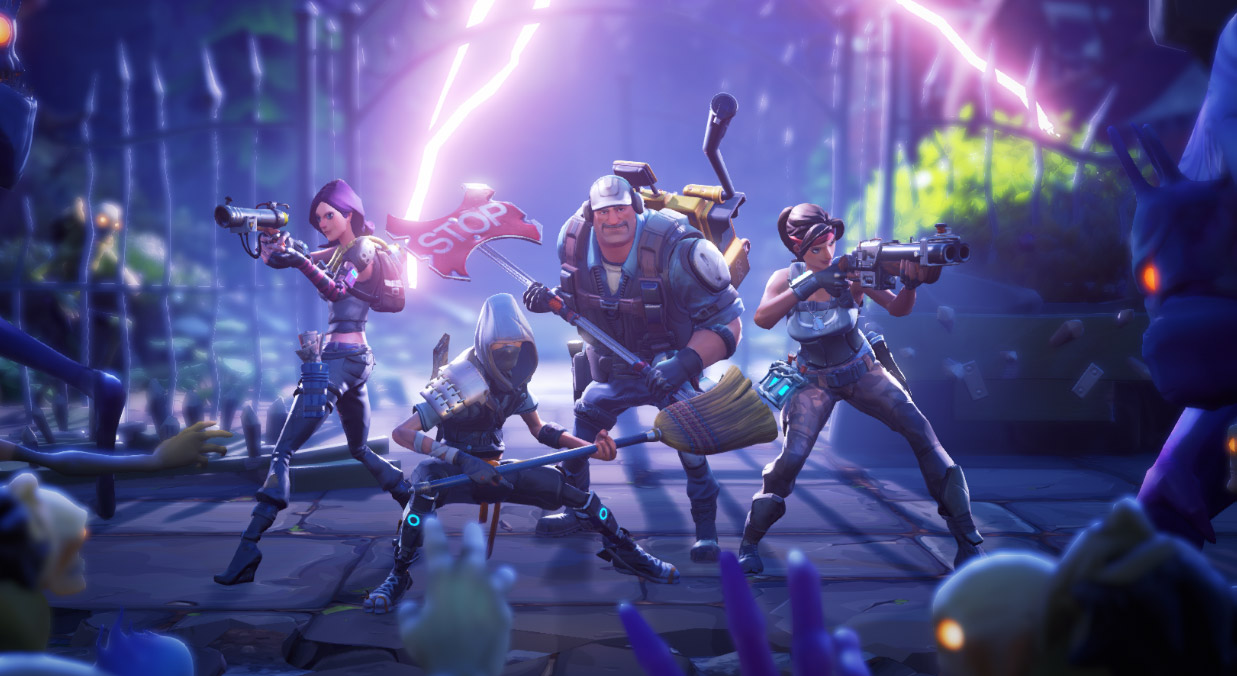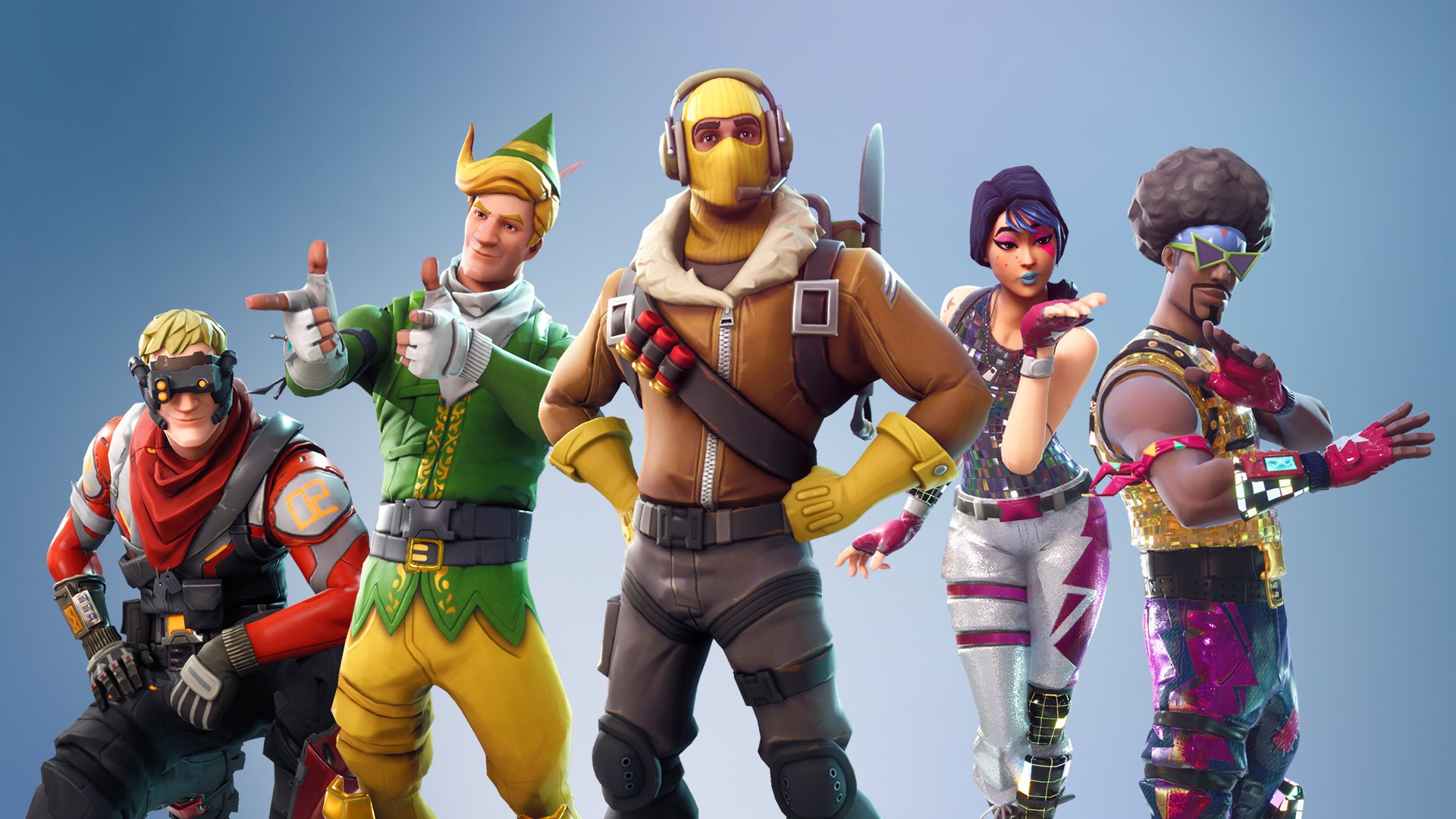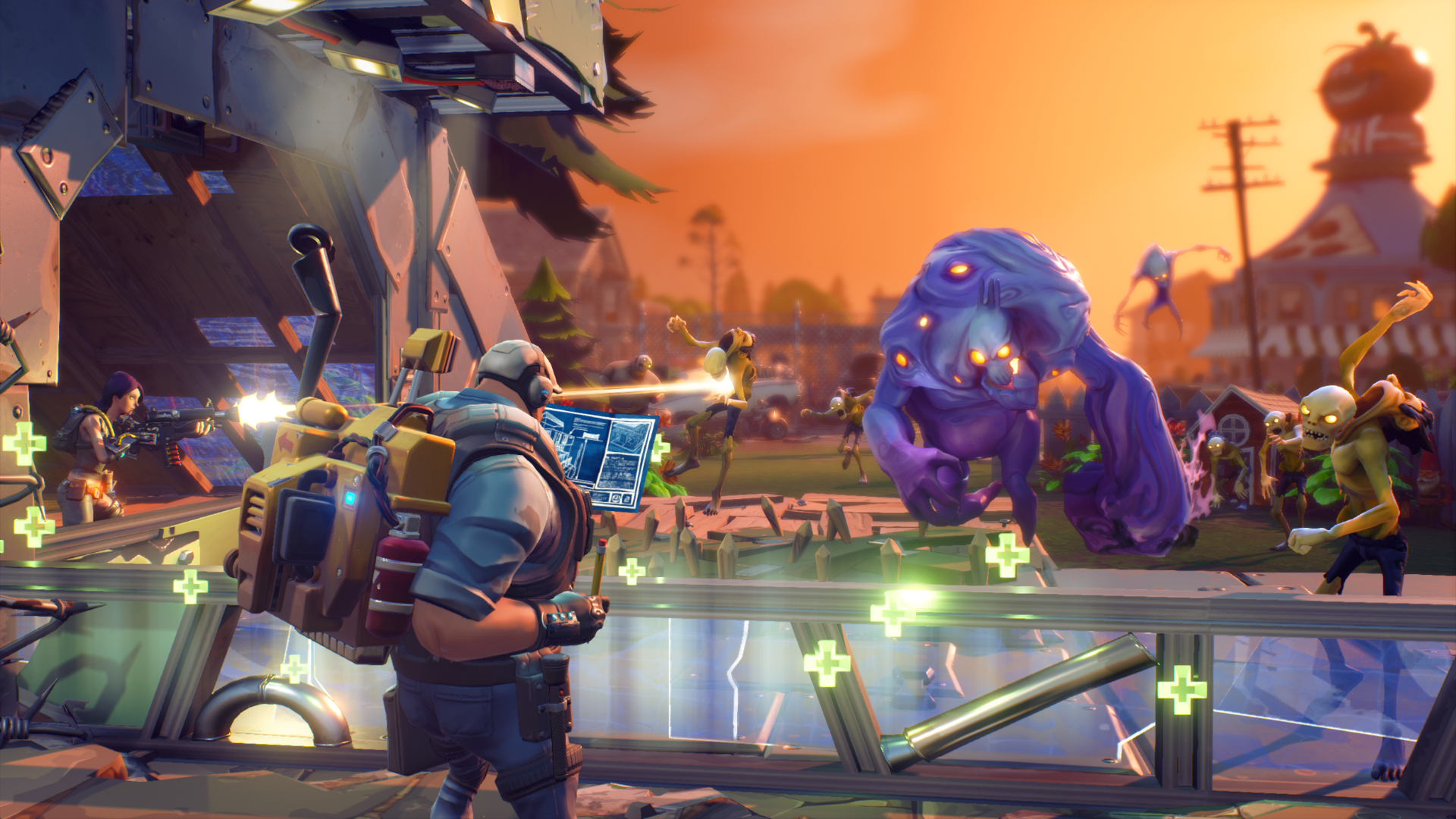Hands-on with Fortnite co-op

“It’s X meets Y” can be an unfairly reductive way of describing a game, but the best way I can explain Fortnite to you is to call it a sandbox tower defense game that uses low-key Minecraft as its opening act.
Fortnite will feature PvP, but in the cooperative session I played, my three teammates and I spawned into procedurally generated maps, took our sweet time gathering resources, then, after we laid walls and traps to our satisfaction, we triggered a horde-mode style fight against different varieties of cartoony undead, some of which were airborne.

What's new with the latest Fortnite season
The best Fortnite creative codes
The optimal Fortnite settings
Our favorite Fortnite skins
The best Fortnite toys
One of the immediate things I enjoyed about Fortnite co-op is the way that structure separates preparation and fighting entirely, allowing me to enjoy both sides of it equally. I like the mixture of socializing and strategizing during the prep phase: my three teammates and I wandered an abandoned town, a procedurally generated map with slightly exaggerated houses, convenience stores, and garages surrounded by green grass and graveyards. We hit everything we could with our pickaxes and other harvesting implements: soda machines, ore deposits, fences, and tombstones to gather metal, wood, bacon, and other stuff. Every object in the game, whether it’s a car or a tree, wobbles like jello when you whack it, an animation that not only makes it easy to see when a teammate is mining in the distance, but expresses Fortnite’s lightheartedness. To make gathering less of a mindless grind, hotspots appear randomly on objects—hitting one accelerates breaking it down.

And that gathering phase isn’t simply about grabbing as many materials as you can, it’s also your opportunity to feel out the environment before things get hectic. We stumbled on a few treasure chests—one might be at the bottom of a mine, or at the top of a tower—and a rare one might contain melee weapons or guns with a couple unique, Diablo-style attributes. And it took our inexperienced team up about eight minutes to find the rift we needed to defend. Once you spot the rift, Fortnite reveals which direction (or directions) enemies will spring from, so you have a rough sense of where to allocate your resources. It took another five minutes to size-up the terrain details around us, plan, and then deploy our defenses.
When enemies aren’t clawing at you, building is generally a cinch: an outline for whatever wall, trap, or turret you want to build appears in front of you, and objects lock smoothly to anchor points. The element I struggled with was the fact that the F1-F8 keys housed all of the building items. It makes sense to separate walls from your weapons and consumables, but it was an unnatural reach to lunge for F1 or F2 even for my big hands. I hope I can figure out a comfortable alternate set of binds.

Everybody was Fort-fu fighting
In your hands, Fortnite handles a lot like Orcs Must Die! 2. Movement is nimble and combat is split between laying defenses and engaging enemies directly with melee weapons and a variety of guns. One of the key differences here, though, is Fortnite’s randomized terrain. Enemies don’t funnel down pre-made lanes, they make their own way through the map, ganging up on and eventually breaking through whatever they perceive to be the best route toward the objective you’re protecting. And it’s on you and your friends to build the entirety of your defensive infrastructure: walls, ceilings, doors, ramps, and traps of varying quality. Part of the fun of Fortnite was the way it prompted me to be creative and strategic with the resources I had, but part of the difficulty of it was when enemies circumvented my plan by poking holes through our weak spots.
Keep up to date with the most important stories and the best deals, as picked by the PC Gamer team.
When that happens, I found it tough to improvise. Part of the skill of playing Fortnite, I can already tell, will be in designing durable, intricate bases that are also easy to navigate in the heat of combat. There’s a tendency to create as many obstacles and bottlenecks you can to slow enemies, but at least to my novice team, those defenses muddled our ability to get to flashpoints quickly.
More generally, I found Fortnite combat to be fun but lower-fidelity than I hoped. One of the small-but-significant things that ate away at me as I shotgunned, sniped, and katana-slashed my way through waves of enemies was the fact that most of them don’t flinch when you hit them. There are death animations, of course, but that absence of basic feedback made cutting down lines of enemies less satisfying than other games that share DNA with Fortnite, like Orcs Must Die! 2.
That said, I admire Fortnite’s ambition. It’s a game that trusts you problem-solve and strategize against threats that are, in large part, driven by Fortnite’s procedural map design. I have a sense that Fortnite could accommodate a wide range of playing styles: do you assign one or two people specifically to building and maintain defenses (walls can be repaired), or do you make it a shared task? Do you create a network of towers for your star sniper to move between, or focus on building one concentrated lane of traps? A lot of Fortnite’s appeal will hinge on whether too many universally-effective tactics will percolate to the surface of the metagame, deemphasizing critical thinking and custom solutions for each map. If Epic can mitigate that and manage to raise the level of polish on combat, this game will be in a great place.

Evan's a hardcore FPS enthusiast who joined PC Gamer in 2008. After an era spent publishing reviews, news, and cover features, he now oversees editorial operations for PC Gamer worldwide, including setting policy, training, and editing stories written by the wider team. His most-played FPSes are CS:GO, Team Fortress 2, Team Fortress Classic, Rainbow Six Siege, and Arma 2. His first multiplayer FPS was Quake 2, played on serial LAN in his uncle's basement, the ideal conditions for instilling a lifelong fondness for fragging. Evan also leads production of the PC Gaming Show, the annual E3 showcase event dedicated to PC gaming.

